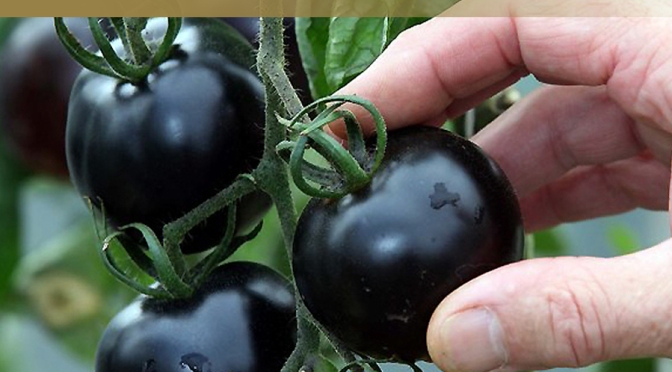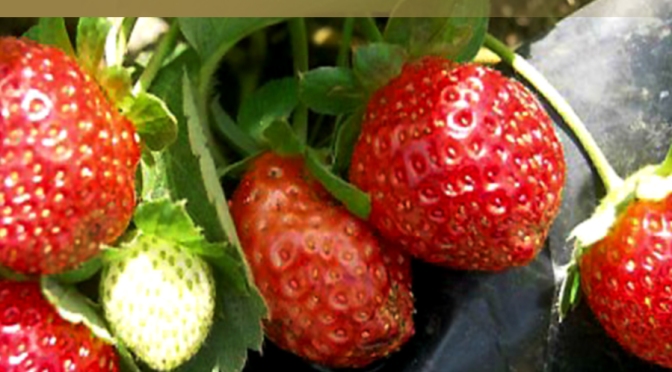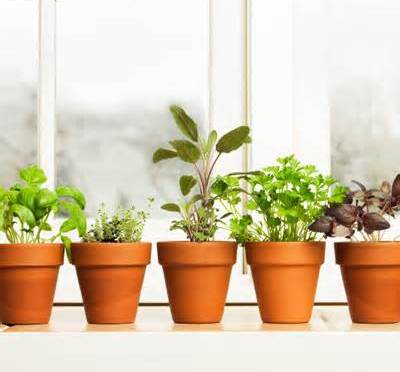 Story by Brian Rademaekers | Photos by Rob Cardillo | A Reblog from GRID Magazine | The Fish Pepper was an African-American heirloom plant popular in Philadelphia and Baltimore, dating to before the 1870s. As anyone with the gardening bug knows, the bleakness of midwinter in Philadelphia has a way of making you dream of warmer times, often hatching ambitious plans for your raised beds. I had one of those moments this winter while looking through the glossy pages of a seed catalog. Among the hundreds of pages of colorful fruits, flowers and vegetables, a particular plant caught my attention: the Fish Pepper.
Story by Brian Rademaekers | Photos by Rob Cardillo | A Reblog from GRID Magazine | The Fish Pepper was an African-American heirloom plant popular in Philadelphia and Baltimore, dating to before the 1870s. As anyone with the gardening bug knows, the bleakness of midwinter in Philadelphia has a way of making you dream of warmer times, often hatching ambitious plans for your raised beds. I had one of those moments this winter while looking through the glossy pages of a seed catalog. Among the hundreds of pages of colorful fruits, flowers and vegetables, a particular plant caught my attention: the Fish Pepper.
With distinct white-striped leaves and young green fruit, the pepper bush was interesting in on a purely visual level. But what really got my attention was the pepper’s history as an African-American heirloom plant popular in Philadelphia and Baltimore, dating to before the 1870s. Heirlooms are plants whose seeds have been saved over generations, replanted year after year, consistently reproducing similar traits. Many vegetables offered at nurseries and big-box stores are hybrids that can produce sterile seeds or offspring with erratic traits.
The idea of a plant with deep roots in our history intrigued me. How many others plants like this were out there? What is our region’s history in growing heirloom food plants? Could I make a whole garden featuring heirloom plants with Philadelphia ties? Thus began my seed-searching quest to create the ultimate Philadelphia heirloom garden.
Center Seedy
As I quickly found, such a garden needn’t lack diversity. The Philadelphia region has long been a powerhouse of heirloom seed production, starting with Native Americans and Quakers and growing with seed companies like D. Landreth Seed Company (founded in 1784) and Burpee (founded in 1876), right through the 19th and 20th centuries.“We had Quakers in the city who were always interested in botany and food production improvement,” says William Woys Weaver, a Chester County author who has been collecting and growing local heirlooms since the 1970s. He inherited his grandfather’s seed collection of hundreds of local heirlooms and has since expanded it to include thousands of local plants. (Learn more about Weaver’s work on p. 46.)
“Philadelphia has always, since at least the 1700s, had a special interest in growing things, so we’re ahead of the game,” Weaver says. “You had all these people growing things here, and the list of heirlooms to come out of this region is incredibly huge, more so than any other part of the country, I think.”
 Generally, heirlooms are considered “any variety that’s older than 50 years,” says Tim Mountz, founder of Happy Cat Seeds in Kennett Square. But not all heirloom-type plants go back 50 years. “We call anything newer than 50 years ‘open pollinated’ varieties,” Mountz explains. If you’ve ever grown or eaten a Green Zebra Tomato, you know a “new heirloom.”
Generally, heirlooms are considered “any variety that’s older than 50 years,” says Tim Mountz, founder of Happy Cat Seeds in Kennett Square. But not all heirloom-type plants go back 50 years. “We call anything newer than 50 years ‘open pollinated’ varieties,” Mountz explains. If you’ve ever grown or eaten a Green Zebra Tomato, you know a “new heirloom.”
Open pollinated or “OP” varieties are created through a process in which two plants with different traits — say, a green tomato and a yellow tomato — are interbred to create a hybrid, explains Mountz. This is done across six generations of plants, with the grower tracking a desirable trait over successive generations. After six generations, the plant can be considered stable. After 50 years, it can be called an heirloom. The Green Zebra Tomato, bred in 1984, is now stable and can be called its own variety, but it is not yet an heirloom.
Happy Cat is one of many places where gardeners can find heirlooms with local roots. One of Mountz’s favorites is the Stoltzfus String Bean, which he found in his grandfather’s collection after he passed away. “It had been extinct for 70 years before we brought it back,” Mountz says. “It’s a string bean, so we’ll eat it green before its beans develop in the pod, and we’ll also dry them and then soak them overnight for use in the winter as a cooking bean for things like refried beans.” Beyond the good eating, he says it’s just a good looking plant. “The flowers are more beautiful, the plant itself is more beautiful, and the bean itself is a dark purple.”
 Williams Woy Weaver. photo by Rob CardilloWeavers Way Co-op in Mt. Airy, Primex Garden Center in Glenside, and Burpee Seeds in Warminster all carry local heirloom seed varieties, but the Fish Pepper that first caught my eye came from the Baker Creek catalog, based out of Missouri. Baker Creek owner Jere Gettle cites the Jersey Devil tomato as one of his favorite heirlooms from our region. “It looks sort of like a horn, which is where I guess the ‘devil’ part comes from. It’s my favorite paste-type tomato … they’re just incredibly good eating.”
Williams Woy Weaver. photo by Rob CardilloWeavers Way Co-op in Mt. Airy, Primex Garden Center in Glenside, and Burpee Seeds in Warminster all carry local heirloom seed varieties, but the Fish Pepper that first caught my eye came from the Baker Creek catalog, based out of Missouri. Baker Creek owner Jere Gettle cites the Jersey Devil tomato as one of his favorite heirlooms from our region. “It looks sort of like a horn, which is where I guess the ‘devil’ part comes from. It’s my favorite paste-type tomato … they’re just incredibly good eating.”
Growing Local
Weaver notes that there currently isn’t an extensive guide to regional heirlooms, let alone a one-stop shop for buying them. Finding them takes some research and “hunting and pecking through catalogs,” he says. But, one great resource can be seed exchange groups like the Philly Seed Exchange.
Aimee Hill, a co-coordinator with the Philly Seed Exchange, says the group doesn’t only focus on seeds with historic ties to the area, but since they come from plants grown in the region, they are by default local heirlooms.
“The idea is to get as many local seeds as possible and have people save seeds no matter where they came from in the first place,” Hill says. “As they’re grown and saved and grown over generations, they become more adapted to the Philly area.” They’ve gotten many seeds from the pre-1800s collection at Bartram’s Garden and the Pendle Hill Quaker community in Wallingford, Pa.
While proponents of heirlooms have long lauded the superior taste compared to hybrid versions grown for commercial markets, there are many other reasons to grow not just heirlooms, but local heirlooms.
 “If you have organically raised heirloom food plants in your garden, you’re going to be living a lot healthier than if you’re just growing hybrids. The heirlooms have not declined in their nutritional value the way these hybridized plants have,” Weaver says, citing studies from the U.S. Department of Agriculture. “Since the 1950s, hybridization has bled out nutrition for the sake of shelf life, or for whatever reason. It’s just not there.”
“If you have organically raised heirloom food plants in your garden, you’re going to be living a lot healthier than if you’re just growing hybrids. The heirlooms have not declined in their nutritional value the way these hybridized plants have,” Weaver says, citing studies from the U.S. Department of Agriculture. “Since the 1950s, hybridization has bled out nutrition for the sake of shelf life, or for whatever reason. It’s just not there.”
Mountz and Weaver also extol the vigor of plants that have been bred to cope with our climate, soil and pests. “They’ll either germinate earlier, or be more resistant to humidity or insects,” Mountz says. “It’s really great to see the local traits you’ll get; it’s not just the local flavor and the local history, but the ability to grow in a climate that’s really cold in the wintertime, but then subtropical for two-and-a-half months in the summer.”
 Tim Mountz found the Stoltzfus String Bean in his grandfather’s seed collection after he passed away.Hill agrees. “If you grow things over generations and save the seeds from specific areas, they become more resilient. It’s like terroir with wine and grapes grown in specific areas,” he says. “They’re better at getting all the good stuff, the fancy stuff, out of that soil so they taste better.” It also enhances economic independence, because seed savers don’t have to buy new seeds each year.
Tim Mountz found the Stoltzfus String Bean in his grandfather’s seed collection after he passed away.Hill agrees. “If you grow things over generations and save the seeds from specific areas, they become more resilient. It’s like terroir with wine and grapes grown in specific areas,” he says. “They’re better at getting all the good stuff, the fancy stuff, out of that soil so they taste better.” It also enhances economic independence, because seed savers don’t have to buy new seeds each year.
Saving for a Seedier Future
I look forward to contributing to that diversity with my “ultimate Philadelphia heirloom garden.” This spring and summer, in addition to the Fish Pepper and the Stoltzfus String Bean, I will be growing Early Jersey Wakefield Cabbage, Amish Deer Tongue Lettuce, Philadelphia White Box Radishes and Jenny Lind Melons. My local tomatoes will include Jersey Devil, one called London Grove (from Happy Cat), and of course some Brandywines — the superstar of our regional heirlooms.
Saving local seeds does more than put delicious food on your plate, it keeps alive a history that is rich but fragile. As Weaver explains, those superstar Brandywine tomatoes, first grown on the banks of the Brandywine Creek in Chester County, are the perfect illustration of that fragility. Just a month after delivering the seeds to a seed company, the grower who gave Brandywines their name was thrown from a horse and killed. Had he died a month earlier, the Brandywine tomato as we know it might have died along with him.
Weaver compares preserving local heirlooms to linguists preserving endangered languages. “With languages, if you lose the speakers, you lose the language,” Weaver says. “It’s the same with these plants — if you lose them, they’re gone. I’ve come very close to losing some things, and it scares me because I shouldn’t be the only one on planet earth with some of this stuff.”
_________
Bloglink: http://www.gridphilly.com/grid-magazine/2013/4/11/exploring-the-seedy-side-of-philadelphia-heirloom-seed-saver.html
Featured Photo: The People’s Community Garden







 Story by Brian Rademaekers
Story by Brian Rademaekers Williams Woy Weaver. photo by Rob CardilloWeavers Way Co-op in Mt. Airy, Primex Garden Center in Glenside, and Burpee Seeds in Warminster all carry local heirloom seed varieties, but the Fish Pepper that first caught my eye came from the Baker Creek catalog, based out of Missouri. Baker Creek owner Jere Gettle cites the Jersey Devil tomato as one of his favorite heirlooms from our region. “It looks sort of like a horn, which is where I guess the ‘devil’ part comes from. It’s my favorite paste-type tomato … they’re just incredibly good eating.”
Williams Woy Weaver. photo by Rob CardilloWeavers Way Co-op in Mt. Airy, Primex Garden Center in Glenside, and Burpee Seeds in Warminster all carry local heirloom seed varieties, but the Fish Pepper that first caught my eye came from the Baker Creek catalog, based out of Missouri. Baker Creek owner Jere Gettle cites the Jersey Devil tomato as one of his favorite heirlooms from our region. “It looks sort of like a horn, which is where I guess the ‘devil’ part comes from. It’s my favorite paste-type tomato … they’re just incredibly good eating.” Tim Mountz found the Stoltzfus String Bean in his grandfather’s seed collection after he passed away.Hill agrees. “If you grow things over generations and save the seeds from specific areas, they become more resilient. It’s like terroir with wine and grapes grown in specific areas,” he says. “They’re better at getting all the good stuff, the fancy stuff, out of that soil so they taste better.” It also enhances economic independence, because seed savers don’t have to buy new seeds each year.
Tim Mountz found the Stoltzfus String Bean in his grandfather’s seed collection after he passed away.Hill agrees. “If you grow things over generations and save the seeds from specific areas, they become more resilient. It’s like terroir with wine and grapes grown in specific areas,” he says. “They’re better at getting all the good stuff, the fancy stuff, out of that soil so they taste better.” It also enhances economic independence, because seed savers don’t have to buy new seeds each year.